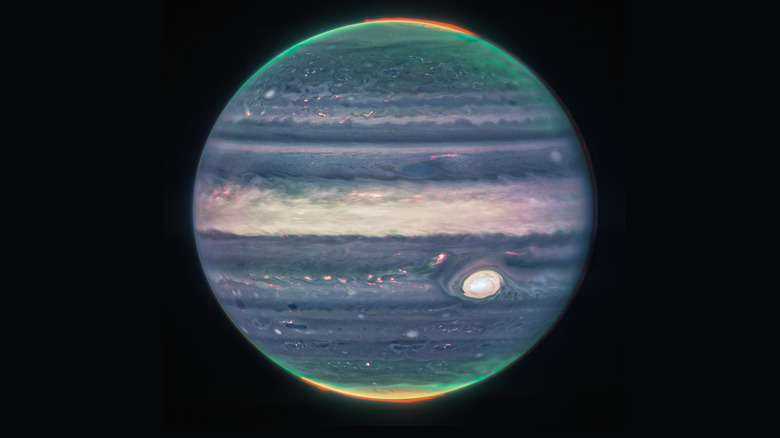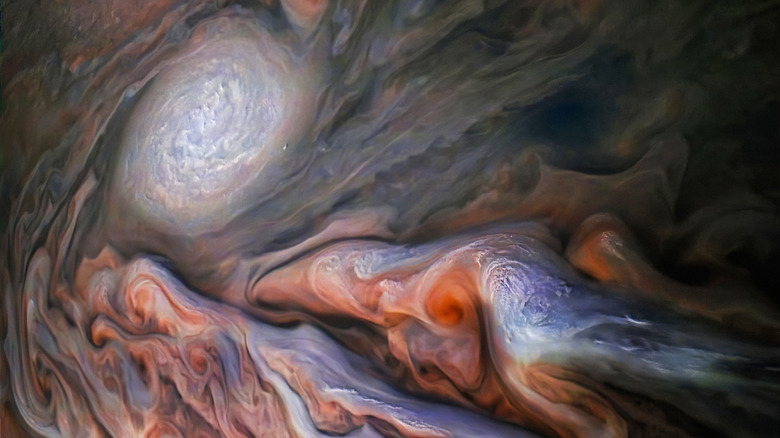James Webb Space Telescope Snaps Incredible Photos Of Jupiter And Its Auroras
When it's not busy snapping some of the most gorgeous shots of space ever caught on camera, NASA's James Webb Space Telescope explores our galaxy and beyond, delivering high-quality images for scientists to study. This time around, the telescope has captured images of Jupiter, a gas giant so big that it could swallow each and every planet in the Solar System two and a half times. JWST didn't just deliver images of Jupiter itself, but also of its moons, rings, and polar auroras. The two images are stunningly detailed and should offer scientists a lot of material for analysis as they continue to learn more about the enormous planet.
NASA detailed the whole story in a lengthy blog post, describing how the photos were taken and revealing the reason behind the strange color scheme. Most previous images of Jupiter come from the Paris Observatory and were taken with the Near-Infrared Camera (NIRCam), equipped with three infrared filters that expose the details of Jupiter's structure. As explained by NASA, infrared is invisible to the human eye, so here, the captured light had to be mapped onto the visible spectrum. This labor of love was done through a collaboration with citizen scientist and enthusiast Judy Schmidt.
As a result, the images are more than just a feast for the eyes — fully understanding them requires knowing the inner workings of light mapping. The longest wavelengths were mapped to appear closer to red, while the shortest ones are bluer. A third yellow and green filter was also used to showcase the hazes around the planet's northern and southern poles.
The Great Red Spot shines brighter than ever
To achieve the final result, astronomers had to create composites made out of several images and then add filters to highlight what's what. The reddish filter is for auroras and the light reflected from the lower clouds on Jupiter; the yellow and green for the south and north poles, and lastly, the blue filter for the light that is being reflected from a deeper main cloud. Both poles have a strong aurora effect. The Great Red Spot, alongside other clouds, appears to be white because of the amount of light that it reflects. The famous Spot is in fact a massive ongoing storm, large enough to encompass the whole Earth.
When shown in a wide-field view, the image of Jupiter reveals more than just the planet itself. We get a glance at its very faint rings, which NASA deems to be a million times fainter than the planet itself. Two of Jupiter's 79 moons also make an appearance — Amalthea and Adrastea, both tiny and not easy to spot. Below the planet, several white spots can be seen, likely to be distant galaxies.
The end result took a lot of work from several teams, but now, the images are ready to be analyzed. Teams of scientists have already begun their work in order to learn more about Jupiter, a surface-less planet so volatile that a spacecraft will never be able to fly through it.

